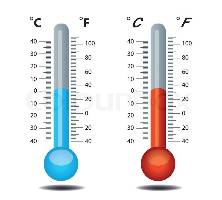Summary
In this lesson, students observe the movement of heat energy by measuring the rise in water temperature after placing hot metal washers in the water. Students also calculate the amount of heat energy transferred between the washers and water. Lastly, students cite specific evidence to refute or agree with two claims.
Essential Question(s)
What factors affect heat energy transfer?
Snapshot
Engage
Students engage in a hands-on demonstration of perceived hot and cold using three pans of water of different temperatures. Students use the Magnetic Statements strategy to discuss the demonstration.
Explore
Students watch a short clip of heat transfer and make a hypothesis. Students design their own experiments to observe the transfer of heat between two types of matter, thus testing their hypotheses.
Explain
Students explain their procedures, share data, and state their conclusions.
Extend
Students create extensions of their experiments and perform the experiments again.
Evaluate
Students complete Two-Minute Papers in which they refute or agree with a statement, citing specific evidence from their experiments.
Materials
Lesson Slides (attached)
Three pans
Water
Heat Transfer Activity Lab Sheet (attached; one per student; optional)
Coffee cups w/lids
Thermometers
Scientific calculators
Metal washers
Twine/Pipe cleaners
Lab composition book/Graphing Paper
Hot plate
Timers or stopwatches
Sticky easel pad paper
Markers
Colored pencils
Pencils/Pens
Sticky notes
Computer with internet access
Engage
Call on a student to place a hand in the cold water and a hand in the hot water. After 30 seconds, ask the student to submerge both hands in the lukewarm water. Ask the student to share some observations with the class. Allow other students to participate in the demonstration. If possible, set up enough stations for every student (or small groups of students) to participate.
Say to students: The water in the middle is room temperature. To your hand, under normal circumstances, you may describe it as lukewarm or neither hot nor cold. What happened?
Allow the students to share their ideas.
Introduce the lesson using the attached Lesson Slides. Display slide 3 to read aloud the essential question. Display slide 4 to go over the lesson objectives. Review these slides with students to the extent you feel necessary.
Go to slide 5. Ask students to think about the following two statements:
Statement 1: Heat energy is transferred from objects with low temperatures to objects with higher temperatures.
Statement 2: Heat energy is transferred from objects with high temperatures to objects with lower temperatures.
Move to slide 6, and introduce students to the Magnetic Statements strategy. Divide the room into two groups. Those who agree with statement one will stand on one side of the room while those who agree with statement two will stand on the other side. Make sure they agree with the same statement. Feel free to divide the group further for larger groups. Have students first discuss and justify their belief, and then ask the entire group to devise one statement, justifying the class’s reason for agreeing with the scenario.
Explore
Keep the previous groups together.
Display slide 7. Show the YouTube video, Red Hot Nickel Ball in Water. It is very short, so be prepared to replay it at least once.
Have the groups reevaluate their statement choice after watching the video. Give them a few minutes for discussion. Instruct the students to make a hypothesis about the transfer of heat between the metal and the water. They must understand that this hypothesis will be tested in an experiment.
Go to slide 8 and lay out all the materials on a table (washers, twine/pipe cleaners, thermometers, and coffee cups). Instruct each group to devise a procedure that will test their hypothesis. They will record their procedure in their lab notebooks.
Explain
Before the students share their data, move to slide 9 and instruct them to calculate the amount of heat energy actually transferred. The students will have the temperature difference of the water, and the mass of water will be equal to the amount of water they used.
Move to slide 10. Give each group a poster board. Instruct them to create a poster that displays their experiment. Have the class participate in the Gallery Walk strategy to view and give feedback on one another's posters.
Extend
Display slide 11. Ask students: What are ways to change this experiment so that heat transfer is shown more broadly? Then have students create their own extensions of their experiment, write a new hypothesis and procedure, and perform it again.
Upon completion of the extensions, lead a class discussion of all the factors that will affect heat transfer.
Evaluate
Display to slide 12 to revisit the following statements:
Statement 1: Heat energy is transferred from objects with low temperatures to objects with higher temperatures.
Statement 2: Heat energy is transferred from objects with high temperatures to objects with lower temperatures.
Pair the students. Inform students to write a Two-Minute Paper that refutes statement one, citing specific evidence from both of their experiments, or a Two-Minute Paper that supports statement two, citing specific evidence from the experiments.
Lastly move to slide 13 to post the statement: Heat transfer is not just about temperature difference. Again, the students will write another Two-Minute Paper that cites specific evidence from their extensions to support this claim.
Resources
carsandwater. (2012, November 25). Red hot nickel ball in water (nice reaction) [Video]. https://www.youtube.com/watch?v=9qSEfcIfYbw
K20 Center. (n.d.). Gallery Walk / Carousel. Strategies. https://learn.k20center.ou.edu/strategy/118
K20 Center. (n.d.). Magnetic Statements. Strategies. https://learn.k20center.ou.edu/strategy/166
K20 Center. (n.d.). Two-Minute Paper. Strategies. https://learn.k20center.ou.edu/strategy/152


